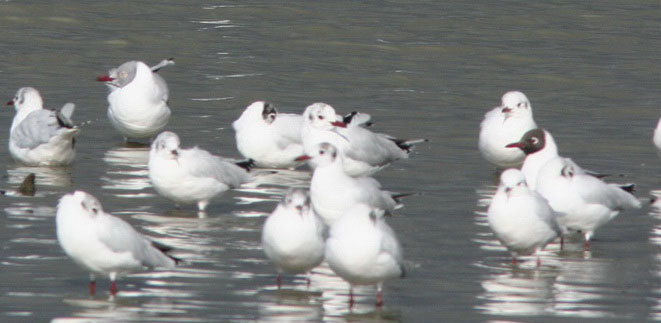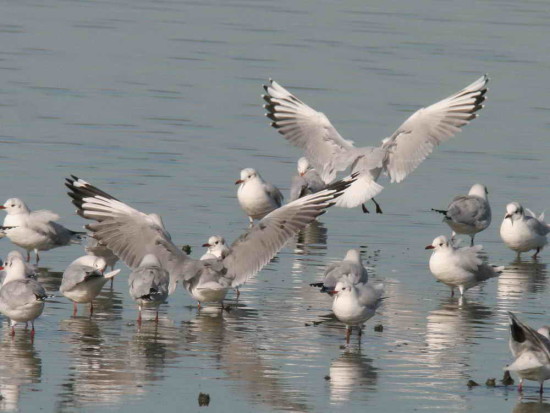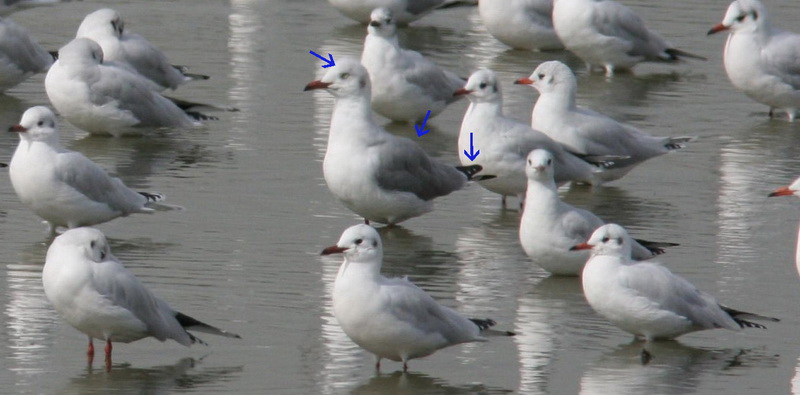The problem between the brown-hooded gull and the grey-hooded gull arises when they are not breeding since they lose their hood, which is the most evident feature to tell them apart. At first glance they may seem all the same. Only a patient search will confirm this since the brown-hooded gulls outnumber the grey-hooded gulls.
As general information: there is a difference in size, the grey-hooded gull is 38 cm and the brown-hooded gull is smaller (35 cm). This can be appreciated in ideal conditions. As far as habitat and behaviour go there are no differences between these two species. They emit different voices, but the numerous brown-hooded gulls' cries cover those of the grey-hooded ones.
| Breeding Period | |
| GREY-HOODED GULL | BROWN-HOODED GULL |
| Grey hood and throat> | Dark brown hood and throat |
| Ivory iris | Incomplete white eyering |
 The two gull species in whole hoods are easily told apart.
The two gull species in whole hoods are easily told apart.
| Non-breeding Period At this moment the hood becomes white in both species and identification problems arise. The differences are subtle and they are not always visible. Just like the head is the most evident reference in the breeding period during the non-breeding period we must focus on:head - upperparts - end of wings (primary remiges which when folded rest on tail) |
|
| GREY-HOODED GULL | BROWN-HOODED GULL |
| With folded wing: End of wings black with reduced white design. | With folded wing: End of wings black with more extended white design. Four or five conspicuous lines |
| Back and wing coverts darker grey | Back and wing coverts lighter grey |
| Light iris | Dark iris |
| Grey line on nape | Conspicuous ear patch |

The dorsal pattern of the wing is also different. The black band near the wing tip is more extensive in the grey-hooded Gull. Clic on photo to enlarge. In this case we compare the grey-hooded gull with the surrounding gulls. Colour of iris, colour of the back and the black-white distribution on end of wings stand out. To look for differences in a photo is easier than on the field, but this training helps to develop an eye to know what to pay attention to.
Clic on photo to enlarge. In this case we compare the grey-hooded gull with the surrounding gulls. Colour of iris, colour of the back and the black-white distribution on end of wings stand out. To look for differences in a photo is easier than on the field, but this training helps to develop an eye to know what to pay attention to.
Fotos 2007 © Roberto Ares. Texto: Javier Ubiría – Cora Rimoldi

